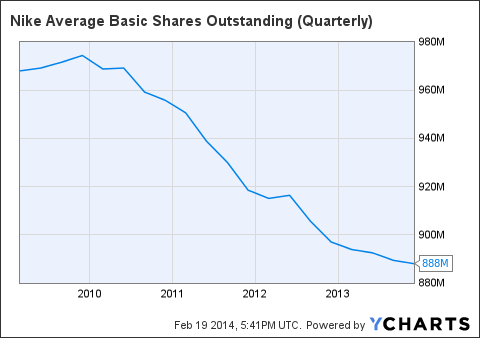The ETF Bubble Is Hiding in Plain Sight Dividends Income Daily
Post on: 13 Июль, 2015 No Comment

Bubble watching is a favorite pastime of the talking heads on CNBC. Virtually everything thats popular in the financial markets has earned the bubble title.
Now, I dislike the term for various reasons.
Its hard to define. A financial bubble is harder to spot than most so-called experts would lead us to believe. And accurately calling the peak of a bubble Well, thats very difficult.
In addition, a bubble isnt a necessary prerequisite for a significant decline in an asset class or a stock.
Nonetheless, I can almost guarantee that you own a piece of a major bubble at this very moment.
Yet its not something we would typically view as a bubble.
Im talking about the bubble in exchange-traded funds (ETFs).
The Truth Behind the ETF Boom
You see, at the end of 2000, there were only 95 exchange-traded products (ETPs) in the United States. This figure includes ETFs and exchange-traded notes (ETNs).
However, by the end of 2013, that number surged to 1,536.
More choices are good for investors though, right?
Not exactly
Instead, the ETF boom is a major blessing for fund management companies, such as iShares (now owned by BlackRock), State Street, WisdomTree and Invesco. These firms reap huge amounts of fees from ETPs.
Because of this, there seems to be an ambition to supply investors and traders with ETFs linked to everything under the sun
Are you bullish on Nashville? Well, I have some good news. Theres a Nashville Area ETF (NASH ), which holds stocks of companies that are headquartered in and around Nashville, Tennessee.
There has also been an effort to provide various unconventional fixed-income ETFs which are arguably unsuitable for the masses. For example, theres the ProShares 30-Year TIPS/Treasury Spread ETF (RINF ), which allows retail investors to speculate on inflation breakevens.
The Winklevoss twins have even submitted an application to the U.S. Securities and Exchange Commission for a Bitcoin ETF.
Basically, there are far too many ETFs. The market is saturated.
Of course, unlike the U.S. housing bubble, the explosion in ETF popularity doesnt have dire consequences for economic growth and corporate profits.
That doesnt mean you shouldnt be concerned, however
ETFs Can Be Hazardous to Your Wealth
There are definitely major pitfalls associated with ETFs that ensnare a lot of us.
For instance, when constructing portfolios with ETFs, its very easy to become improperly diversified by having too much exposure to one asset class, sector, industry, country or commodity.
Plus, unlike mutual funds, ETFs can be bought and sold during normal trading hours. But just because ETFs make it easy to buy and sell a basket of stocks, doesnt mean we should trade them more often. Overtrading can hurt the performance of long-term investors.
Perhaps the biggest problem with ETFs is that many investors dont fully appreciate the underlying risks:

- Liquidity risk. During times of market stress think Flash Crash ETFs are increasingly likely to deviate from their underlying net asset value (NAV). This is because many ETFs are highly illiquid. In other words, they have low average trading volume and fewer firms making a market in the shares.
- Improper usage. The 2X or 3X levered ETFs are dangerous enough as it is, but many investors compound this risk and hold them for extended periods of time. This is a big mistake. Many volatility products, such as the iPath S&P 500 VIX Short-Term Futures ETN (VXX ), are also used improperly by being held as investments and not trading vehicles. The VXX, which is an ETN and has a different structure than a traditional ETF, is down 99.3% since inception.
- Hot money flows. Thanks to ETFs, its now easier than ever to chase momentum and buy into the hottest trends. Emerging markets are a perfect example. In late 2009, emerging markets were on fire. Check out the cover of The Economist from November 12, 2009:
According to ETF.com, in the 12 months that followed this cover, the Vanguard FTSE Emerging Market ETF (VWO ), iShares MSCI Emerging Markets ETF (EEM ) and iShares MSCI Brazil Capped ETF (EWZ ) experienced an aggregate $26.6 billion in inflows.
But since November 12, 2010, VWO, EEM and EWZ are down 20%, 18% and 49%, respectively. And since January 1, 2013, money has poured out of these funds to the tune of $25.2 billion. Not only does this hurt investors, but these investment vehicles have been condemned for exacerbating the boom and bust cycle in developing nations.
Of course, despite all of these criticisms and drawbacks, there are definitely some quality offerings out there that we should utilize.
As long as we avoid the common ETF mistakes and keep an eye on those expense ratios (annual management fees), then we can still protect and grow our wealth.
Just keep it simple!
In D&I Daily s next edition, Ill delve further into the topic of fees and unveil our favorite dividends and income ETFs, including some hidden gems that may not be on your radar.
Safe investing,
Alan Gula, CFA
As Wall Street Daily’s Chief Income Analyst, Alan Gula is continually and fervently analyzing the financial markets. He draws upon a wide range of finance experience, including investment banking, research and trading. Learn More >>














